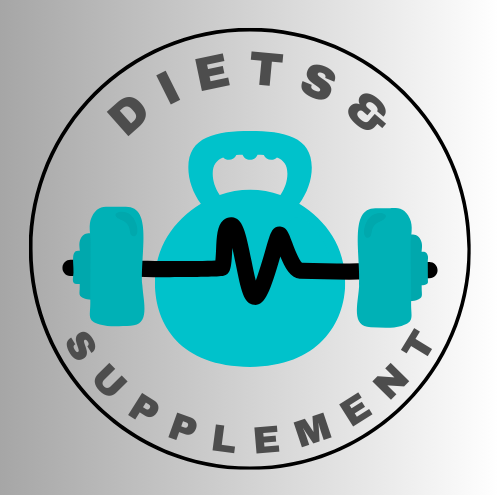 I understand you’re eager to build muscle and see results. To help you get there, we need to start with some essentials. First, there’s more to muscle growth, known as hypertrophy, than just lifting heavy weights. The process encompasses several vital components, and I’ll address each one. By comprehending these basics, you’ll set yourself up for a successful muscle-building journey.
I understand you’re eager to build muscle and see results. To help you get there, we need to start with some essentials. First, there’s more to muscle growth, known as hypertrophy, than just lifting heavy weights. The process encompasses several vital components, and I’ll address each one. By comprehending these basics, you’ll set yourself up for a successful muscle-building journey.
Nutrition is an undeniable cornerstone of muscle building. Without fueling your body properly, your workouts might not lead to the gains you’re working for. Your muscles need protein to repair and grow, and your energy stores also require replenishing with carbohydrates and fats. I’ll walk you through the foundational dietary elements that support muscle growth and how you can tailor your intake to match your workout intensity and goals.
Speaking of goals, setting clear and achievable targets is crucial. Do you want to increase muscle mass, improve strength, or both? Your objectives will shape your workout regimen. And remember, gains don’t happen overnight. Patience and persistence are your allies in this endeavor, and I’ll show you how realistic goal setting paves the way for long-term success.
We can’t overlook the significance of rest and recovery. You might feel compelled to push hard every day, but understanding how muscles repair and grow during rest can prevent burnout and injuries. I’ll break down why rest days and a good night’s sleep are just as important as your time spent in the gym.
=====>Try LeanBiome for fat burning<=====
With these foundational aspects addressed, you’re ready to move to the next critical step: designing your workout. In the following section, I’ll guide you through structuring your workouts effectively and strategically to ensure you’re on the path to reaching your muscle-building goals.
Designing Your Workout: Structuring for Success
When it comes to building muscle, laying out a well-structured workout plan is crucial. Your routine should balance frequency, exercise selection, and intensity to create the optimal environment for muscle growth.
Figuring out the best workout frequency depends on your experience level and schedule. Beginners might see results from three full-body workouts a week, while more advanced lifters could require four to six days with split routines targeting different muscle groups.
Combining compound exercises, like squats and deadlifts, with isolation movements, such as bicep curls and leg extensions, ensures you work the major muscle groups efficiently while also focusing on specific muscles.
Progressive overload, the gradual increase of stress placed on your muscles, is essential. It can be achieved by increasing the weight, repetitions, or intensity of your workouts over time. This is what stimulates your muscles to grow stronger and larger.
Periodization involves varying your training plan over set periods. This might mean changing the number of reps, sets, or rest intervals to avoid plateaus and maintain progress. It helps in keeping your workouts challenging and ensures continuous muscle development.
Fine-Tuning Your Technique
I can’t stress enough the importance of proper form. Lifting more weight than you can handle with good technique isn’t just counterproductive; it’s a fast track to injury. Every exercise in your routine needs to be performed with a focus on form to engage the intended muscles correctly.
Speaking of focus, you’ve likely heard about the mind-muscle connection. This isn’t a fancy term thrown around by bodybuilders for no reason. It’s about being present in your workout, mentally engaging the muscle you’re targeting. This intentional focus can actually lead to more significant muscle activation and better gains.
Not every body is the same, which means adjusting leverage and angles can be crucial for muscle stimulation. Pay attention to how your body feels during each exercise and make small adjustments to find the best angle for you. Sometimes, a slight change in grip or stance can make a world of difference.
Finally, tempo isn’t a musical term reserved for bands. It refers to the speed at which you perform your exercises. Incorporating different tempos helps manage time under tension, a critical factor for building muscle. Slowing down the eccentric (lowering) phase of an exercise can trigger more muscle growth than you might expect.
Monitoring Progress and Making Adjustments
Success in muscle building isn’t just about what happens in the gym; it’s also about the clarity and responsiveness of your plan over time. To ensure you’re on the right track, regular tracking of your workouts and evaluating muscle development is crucial. Keep a workout log to record the weights lifted, repetitions completed, and how each session felt. This data is indispensable for identifying trends, strengths, and areas needing improvement.
Your body’s adaptation to stress means that what works now may not work indefinitely. Be prepared to periodically review and adjust your workout plan. If your progress stalls, consider variables like volume, intensity, and frequency. Sometimes, a small tweak in your routine can lead to breakthroughs.
Plateaus are a natural part of any fitness journey. Understanding why they occur is the first step to overcoming them. Often, they’re a sign that your body has adapted to the current stimulus and is ready for a new challenge. This might mean changing up your exercises, adjusting your rep scheme, or increasing the weight.
Last but not least, maintaining your motivation is pivotal. A varied workout not only combats boredom but also challenges your muscles in new ways, facilitating continued growth. Remember, building muscle is a marathon, not a sprint. Keep your eyes on your long-term goals, and don’t hesitate to celebrate the small victories along the way.
